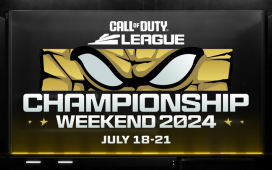Mentioned in this article
League/Tournament Brands:
John Needham, global head of esports for Riot Games, said rebuilding the League of Legends European Championship (LEC) was some of the most rewarding work of his career. As manager for both Europe and North America, he worked with the Berlin team on the league’s 2019 reinvention, before assuming a global lead on one of the world’s biggest esports properties. “We throw these events that are culture moments, doing K/DA and AR dragons flying into stadiums, and every year we need to up the bar on innovation,” he told The Esports Observer.
This time last year, the private-owned games publisher was being thrown tough questions from fans over budget concerns. In a candid public response, Global Manager Derrick Asiedu said the company spent over $100M USD annually on esports globally, but was a long way from breaking even. Having upped the number of long-term commercial partners for this year’s World Championship, Needham paints a more optimistic outlook.
“We’re going to grow revenues by 50% this year, and probably 50% again next year,” he said. “We’re aiming for full sustainability in the tenth year of our sport. I don’t know that that’s been done in any major traditional sport, so I’m super bullish on the future businesswise.”
Like so many leaders in the esports space, Needham is keen to tout the game’s young audience and playerbase. Millennial interest is bringing in not just sponsors, but local governments keen to stay relevant to the next generation. This year’s World Championships, for example, was a full partnership with the city of Paris, which co-hosted an activation village with tournament partner Mastercard, and hosted a press conference in the Eiffel Tower; both with key city politicians in attendance.

“You’re only going to see this model grow, particularly when we go to China next year,” said Needham, adding that the company is already seeing a lot of competition in hosts for its events. “We do run a bidding process. It’s not the level at what you’ve seen in the Olympics, but we’ll get there.”
While the mid-season tournament has touched down in cities like Rio de Janeiro, Hanoi, and Taipei, the World Championships have never strayed from the game’s four strongest regions: China, Europe, North America, and South Korea. Catering to these markets has led to an imbalance competitively; to date, none of the so-called wildcard regions have qualified for the main event.
“You’ve seen some consolidation happen in regions,” said Needham, referring specifically to the Liga Latinoamérica (LLA), created this year out of two smaller regions in the continent, and which will soon broadcast out of Mexico City through host partner TV Azteca. “Viewership has been growing incredibly in Latin America, so I see this partnership as a way to again take it up a notch, which is going to trickle down into developing a stronger pool of talent in the region.”
Similar consolidation will take place next year in Southeast Asia, which will merge with the competition covering Hong Kong, Macau, and Taiwan. The thought is that addressing structural problems could push these leagues further, as was the case with the LEC. The strong performance of the European region on home soil helped contribute to a 20% increase in viewership across the group, quarter, and semi-finals.

As it stands, however, global markets such as India, the Middle East, and Africa are completely outside the professional ecosystem. When asked if there will ever be a place for these playerbases, Needham said Riot would always examine demand for an esports league. “We look at things like player density, the business, and economics of the regions and see if we can really build a sustainable ecosystem there.”
Beyond growing out League of Legends, the 13-year-old gaming company will eventually have five new competitive titles, all of which could branch into their own respective esports ecosystems. “Like any game, it takes a while to balance a game and to make sure that it has integrity at a competitive level,” said Needham.
The recently released spinoff Teamfight Tactics will feature in its own tournament at this year’s League of Legends All-Star event. However, a full-on competitive league isn’t likely for the title. “We’re going to focus a lot more on entertainment-focused infrastructure, that won’t be as regimented,” said Needham. “That’s just specific to how the game is played. It’s a bit more casual than League of Legends from a competitive perspective.
“With these new games, we don’t have any plans that we’re ready to talk about yet, but again, if we feel good that we can deliver a good competitive experience and the fans are demanding it, we’ll deliver.”
Upcoming Event
Esports Rising – Nov. 14 | Who Is Attending?
Esports organizations in the likes of Team Liquid, 100 Thieves, Gen G. Game developers, including Riot Games and Blizzard. Non-endemic sponsors such as adidas, Anheuser-Busch InBev, and Jack in the Box and more. Sponsored by Lagardère Sports, and presented by Sports Business Journal / Daily, with support of The Esports Observer.














